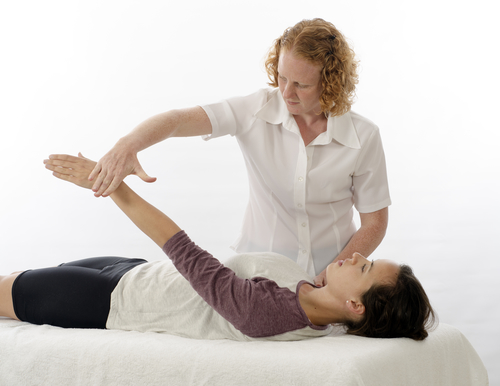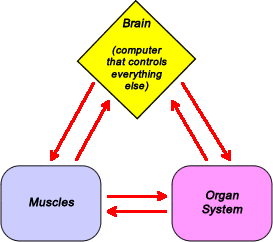Applied Kinesiology and Muscle Testing

What Is Manual Muscle Testing?
Think of the brain as a computer. This “computer” sends electrical signals through the nervous system to all 639 muscles in the body. Regardless of what we are doing, this happens non stop, every moment. It does not matter if we are consciously using our muscles or not. The brain signals our muscles, which then reply with an electrical signal back to the brain. Therefore, there is an electrical circuit between our brains, and muscles.
Manual muscle tests looks for areas where the circuit between brain and muscle is weak. It is much more of a nervous system test than of actual muscle strength.
Since the brain and muscles also communicate with organ systems, a weakness in one area can effect the other. In fact, many muscles are paired with specific organs. Stress on those organ systems can cause weakness in their corresponding muscles. This can be easily found on a manual muscle test.

Manual Muscle Testing Techniques
Manual muscle testing (MMT) began in the 1960s by chiropractor George Goodheart. His system used MMT to diagnose structural issues. This was called Applied Kinesiology.
Over time newer methods developed. Muscle testing could now be used to test different organ systems, nutritional status and toxicity. A system even developed for mind-body work..
The following technique are those I am familiar with and use with clients. These brief summaries do not cover everything which can be done within each.
Touch For Health (TFH)
Different muscles are paired with corresponding organ systems. For example, if the deltoids tests weak, this shows there may be a problem with the gallbladder.
TFH treats weak muscles in several ways. The lymphatics and vascular systems may be stimulated by treating specific reflex points all over the body. Acupressure points and nutrition are used as well.
Neuro-emotional technique (NET)
NET is a mind-body technique. The body may hold on to past emotionally traumatic events which causes a change in physiological function. These are called neuro-emotional complexes. NET allows the practitioner to test for and release neuro-emotional complexes.
Allergies
The most simple way to do is to have the substance itself. If it’s not available in the office, then practitioners such as myself have hundreds of test vials available. In the office I use muscle testing to challenge clients against various foods, seasonal allergens and pet hair.
Technically speaking an allergy testing implies a lab test which measures antibodies. These can be IgE, IgG or IgA tests. Since a muscle testing doesn’t measure antibodies it isn’t technically an allergy tests. It is however a simply way to measure the body’s response against against substances to find out what someone may be reacting to.
Testing for herbs and supplements
In office I test clients against herbs and supplements before recommending them. This helps to figure out what is best for the client and helps to avoid adverse responses.
Clients are also welcome to bring in supplements or anything else they are taking for testing. Results are often surprising.
Testing against toxins
This is similar the challenge against supplements. This time we’re looking at toxins such as lead, mercury, other metals, pesticides and environmental pollutants. It’s not unusual for a new client to test weak against dozens of toxins.
Do not conflate muscle testing against toxins with actual lab tests. Testing weak against mercury does not prove anyone has mercury toxicity. It’s more like the nervous systems saying “get that away from me, I don’t like that.”
It may indicate toxicity. It could also mean detoxification pathways are stressed at the moment and can not handle the additional stress. Another possibility is immune system sensitivity.
This is why I still like to do actual lab tests as well when needed.